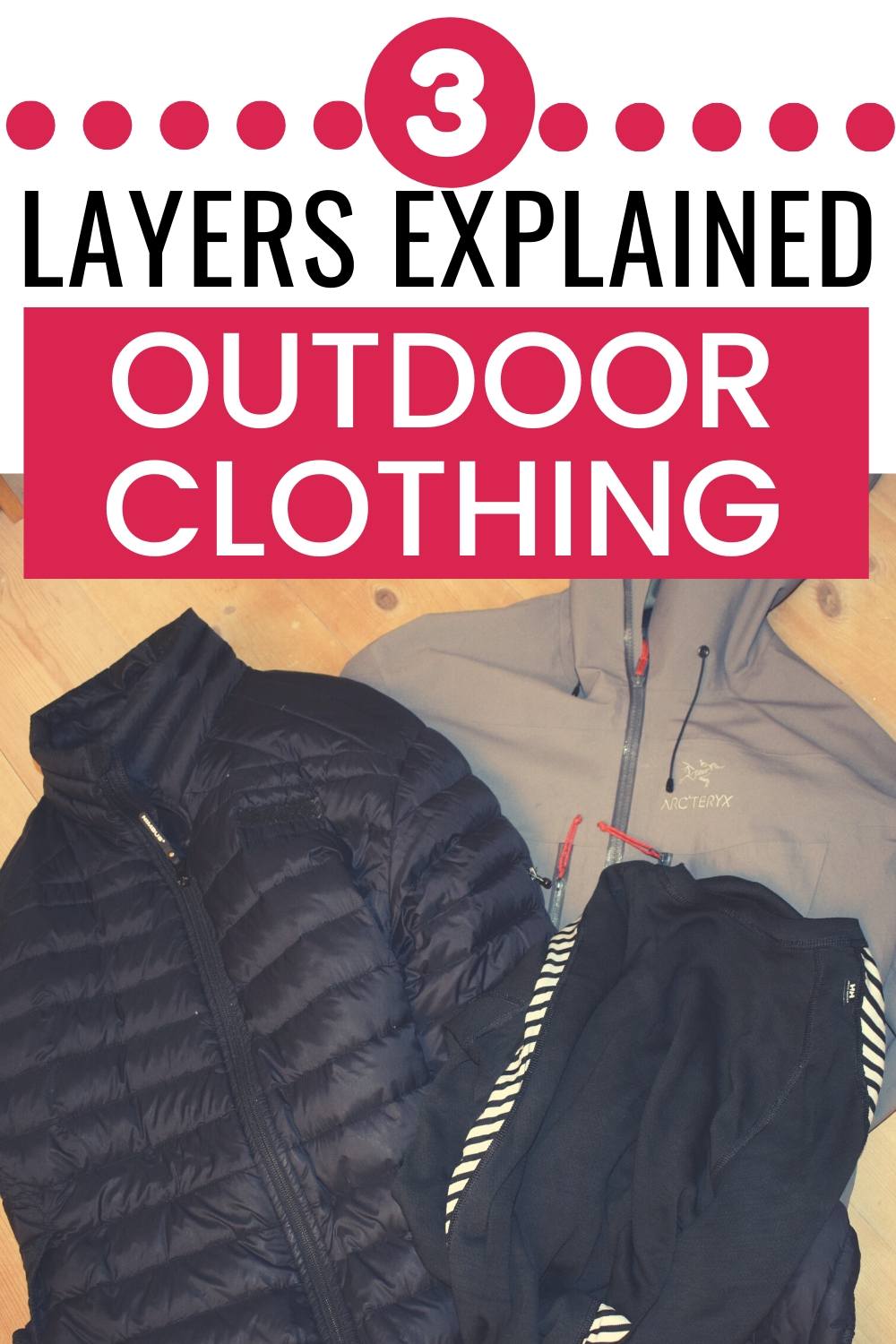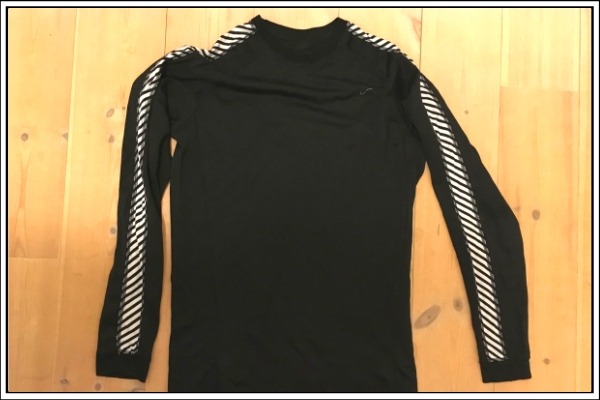Have you ever wondered how do you dress in layers and how layers work? You have probably heard of layers when it comes to hiking. There is talk about a base layer, a middle layer and a base layer. But what is it about layers that is really good when you are hiking?
Dressing in is important when you hike because of the different temperature you can experience when your body is working hard. The base layer is the layer closest to your body, and is ment to keep your body dry even when its working hard. The middle layer is an insulating layer with lots of air to keep you warm. The outer layer is a water and wind proof layer to keep you protected from the elements.

We are outdoor geeks, scouts and have been for more than 25 years, both of us. During that time we have been on many hikes. Layers can make all the difference for your outdoor experience. If you go outdoors in just a big jacket, you have no way of adjusting the temperature just a little. With layers you can do just that, take off a layer if you are warm, or add a layer if you are cold.
Once you understand the basis of layering your clothes, you will be much more comfortable on hikes. Lets look into a few more of the principles behind layering your clothes for hiking.
The three-layer principle explained:
The base layer:
The base layer is the layer closest to your body. It is meant to move the sweat away from the body. It should ensure that the body remains dry even when its doing hard work. If the layer closest to your body becomes wet, and you stop working, your body temperature will drop quickly and you will be cold.
Materials and suggestions:
For the base layer you can choose products made from wool, cotton or synthetic materials.
Wool is excellent at keeping warm when its wet and therefore a great choice for the base layer.
Cotton is comfortable and durable but it’s not good at transporting sweat away from the body.
Synthetic products and produced to transport sweat and is therefore really good at it. Synthetic products are often made with a quick dry capacity as well, making them good if you know you will be working hard. Keep in mind that not everyone finds it comfortable against their skin, and therefore it’s not ideal as the base layer.
See all of our base layer recommendations here
Common questions about the base layer:
Do the base layer keep you warm?
– Well…. not really. While it does provide you with some extra warmth, the base layer is not ment to keep you warm. It is ment to keep you dry, and thereby keep you from not getting cold. The layer that keeps you warm would be the middle layer.
Should thermals be loose or tight?
The base layer should fit your body quite tightly. You want skin contact all over, so that it becomes an “extra skin” so to speak. You want the base layer to pick up any moisture from your skin straight away and that will be eaier if your clothes is tight.
The middle layer:
The middle layer is meant to keep you warm, even if this layer gets wet from your sweat. One thing to keep in mind is that the thing that keeps you warm in this layer is air getting heated by the body. Therefore this layer needs to have some thickness to it, to make room for the air that you need to warm with your body. Tight fit clothes will not do as well in this layer as a down jacket.
Materials and suggestions
For the middle layer you can choose products made of cotton, wool dawn or fleece. Wool is a really good material for this layer especially for wet areas as it is really good at keeping warm while wet. The downside to wool is that it is a heavier material than some of the other products.
Cotton would work in this layer. It is strong, cheap and it keeps the heat in. Cotton is also the least flammable product.
Dawn also works really well for this layer. Dawn is amazing at keeping warm. It’s remarkably light and easy compact if you need to carry it. Down does loose its ability to keep you warm if it is wet.
Fleece is a synthetic product that has a high heat ability and its light. Fleece is really good as the second layer but be careful around the fire as it can melt.

The outer layer
The outer layer needs to be the shell. It is a layer that ensures that your body is protected from elements from the outside, like the rain and wind. This layer should not let wind or rain through to your body, but at the same time you need for sweat and excess heat to be able to leave your body.
Materials and suggestions:
For this layer you can choose products made from Cotton or different synthetic products.
Cotton can be made wind and water proof with different wax products. This gives you a really strong and flexible outer shell that will last you for years. It does require quite a lot of maintenance and if you’re out in really heavy rain it will not keep you dry.
Synthetic membranes, like Gore-Tex and sympatex, are systems that are made up of several layers. Typically they are 2 to 3 layer pants and jackets. The membranes work by allowing the heat and the sweat to pass. At the same time, the keep the water out.
synthetic membranes are really good solution for the auto later as they are effectively stopping the wind and water and at the same time they can allow the body to breathe, at least some. With high activity levels the membranes have a difficult time allowing the heat from the body to leave fast enough. These layers are often equipped with zippers, or other openings, and by opening these the heat will leave you faster.
Finally we have the good old trusted rain suit made from PU. These are really wind and water proof but they will not allow the body to breathe. Rain suits made from PU you are really durable and it’s good to wear in places where it’s really heavy rain. It’s no wonder that fisherman around the world choose this is their third layer.
How to use the three layers:
When you are on a trip and you are in the three layers, you can really start using them. When you become to warm, make a break and remove the second layer, the warm layer. This way your body keeps warm with the activity, and you have layer one to keep you dry, and layer 3 to keep you warm. Remember to add layer 2, the warm layer, if you stop for a break, as it can be tough to keep warm otherwise.
Have you ever needed layers on a hike? Share your best story with us.
Until next time
Jens
You might also like:
[pt_view id=”c4bc3fd0r2″]


























That sounds amazing! Best of luck with it!
We are having a dutch oven cooking contest at our next girls campout. I would like to bake bread in…
Thank you, Much appreciated (And I may have gotten that word wrong, but the feeling is true :-) ) Have…